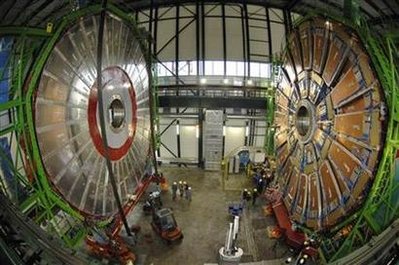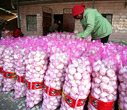Global General
Big Bang machine achieves first particle collisions
(Agencies)
Updated: 2009-11-24 17:10
ZURICH: Scientists have smashed together proton beams for the first time in a 27-kilometre tunnel under the French-Swiss border in an initial step toward discovering how the universe came into existence, they said on Monday.
|
 Overview of the first element (L) of the huge magnet of the CMS (Compact Muon Solenoid) experimental site at the European Organization for Nuclear Research CERN (Centre Europeen de Recherche Nucleaire) before its lowering on Thursday in the French village of Cessy near the Swiss city of Geneva November 29, 2006. [Agencies]
|
Scientists at the European Organisation for Nuclear Research (CERN) hope experiments will already start giving clues about the origins of the universe in the coming months as the world's biggest particle collider starts moving to full power.
| ||||
It is only three days since the "Big Bang Machine," or Large Hadron Collider (LHC), was switched back on after being halted by an accident 14 months ago, just 10 days after its first start-up.
Earlier, physicist Steve Myers said it could take until 2011 for beams of protons to hit top velocity in the nearly $10 billion experiment, which involves scientists from dozens of countries.
The key aim of the project at the CERN research center is to try to discover how the universe took shape, after the Big Bang 13.7 billion years ago spilled out matter at vast speeds and energies that eventually became suns, stars, planets and then life itself.
Experiments in a previous collider at the CERN research center near Geneva at the foot of the French Jura mountains staged particle collisions producing energy very close to that of the Big Bang.
The LHC operating at its full might should recreate conditions like those just one billionth of a second after the primeval explosion.
The scientists now plan to increase the beam intensity and accelerate the beams further so they can gather enough collision data by Christmas to help set up experiments.










